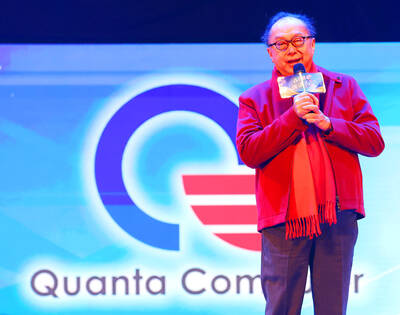India is still adding a staggering 15 million new mobile phone connections a month, but the world’s fastest-growing cellular market has hit rough waters.
A cut-throat price war is hammering down call charges, putting pressure on telecom companies’ earnings and share prices, and threatening a bruising shakeout in a sector that has become crowded with new players.
“The tariff reductions are hitting revenue growth and with new entrants, there’s less to go round for everyone,” Religare Securities analyst Himanshu Shah said.

PHOTO: AFP
Top Indian mobile phone firm Bharti this month announced a lower-than-expected 13 percent rise in quarterly net profit from a year earlier, while profits halved at No. 2 operator Reliance Communications.
EVEN MORE AGGRESSIVE
Competition was already fierce but has become even more aggressive as new players unleash deeper price cuts with innovative per-second billing plans that have pushed call costs down to less than US$0.01 a minute. Some operators are offering rates as low as 0.01 rupees a second, or a fraction of a US cent.
The per-second billing was launched in June by the entry of Tata DoCoMo, a joint venture between India’s Tata Teleservices and Japan’s NTT DoCoMo.
“We’ve seen a wave of price cuts,” said Shubham Majumder of Macquarie Research. “Definitely there’s downside pressure.”
Signs of the trend can be seen in the fall in average revenue per usage (ARPU) — an industry profitability measure — which shows the amount companies make for every minute a client talks.
The ARPU for Reliance Communications for the second quarter ending September slid 23 percent from the preceding quarter, while Bharti’s ARPU fell 9.4 percent.
Akhil Gupta, deputy chief executive of Bharti Airtel’s parent, Bharti Enterprises, said the sector had been afflicted by “irrational pricing.”
The ARPU drop reflected the rock-bottom tariffs as well as growing company reliance on lower-spending rural customers as they push deeper into India’s hinterland to expand revenues.
Total telephone penetration, including landline and mobile phones, in the country of nearly 1.2 billion stands at 43 percent — up from 2.8 percent in 2000 and testimony to the telecom sector’s blistering growth.
India added 14.98 million new phone customers in September, pushing the number of users to more than 500 million — 15 months ahead of a government target for reaching the milestone.
The boom in phone connections has been overwhelmingly driven by cellular services, with mobile customers comprising 40.31 percent of the 500 million telephone users.
India is the world’s second biggest cellular market, lagging behind only China, which has more than 600 million users.
SATURATED
Urban mobile markets are already saturated but there are still hundreds of millions of customers to be signed up in rural areas — a tantalizing prospect for new entrants that see India as one of the few global growth areas.
Another four players, including Norway’s Telenor and United Arab Emirates’ Etisalat, are set to roll out services in the next few months, joining the 11 companies already pitching for customers.
As competition has mounted, the companies’ share prices have taken a hit, with market leaders Bharti sliding 30 percent in a month and Reliance Communications tumbling 45 percent.
Investment house MacQuarie recently downgraded the sector to “under-perform.”
India plans to hold an auction in January for third-generation spectrum, which will allow high-speed Internet and video downloads on mobile phones.
But analysts say it will take time for companies to earn back the money spent on the licenses and that the auction will add to their balance-sheet burdens.
Experts say the sector can only reasonably support four to five players and that consolidation looms.
“These developments will accelerate industry consolidation over the next 18 to 24 months,” said Satish Seth, group managing director of Reliance Communications, adding that Reliance would be a survivor.
A shakeout will ultimately be beneficial for the industry as it would allow those who emerge on top to restore pricing, analysts say.

Quanta Computer Inc (廣達) chairman Barry Lam (林百里) is expected to share his views about the artificial intelligence (AI) industry’s prospects during his speech at the company’s 37th anniversary ceremony, as AI servers have become a new growth engine for the equipment manufacturing service provider. Lam’s speech is much anticipated, as Quanta has risen as one of the world’s major AI server suppliers. The company reported a 30 percent year-on-year growth in consolidated revenue to NT$1.41 trillion (US$43.35 billion) last year, thanks to fast-growing demand for servers, especially those with AI capabilities. The company told investors in November last year that

Intel Corp has named Tasha Chuang (莊蓓瑜) to lead Intel Taiwan in a bid to reinforce relations between the company and its Taiwanese partners. The appointment of Chuang as general manager for Intel Taiwan takes effect on Thursday, the firm said in a statement yesterday. Chuang is to lead her team in Taiwan to pursue product development and sales growth in an effort to reinforce the company’s ties with its partners and clients, Intel said. Chuang was previously in charge of managing Intel’s ties with leading Taiwanese PC brand Asustek Computer Inc (華碩), which included helping Asustek strengthen its global businesses, the company

Taiwanese suppliers to Taiwan Semiconductor Manufacturing Co. (TSMC, 台積電) are expected to follow the contract chipmaker’s step to invest in the US, but their relocation may be seven to eight years away, Minister of Economic Affairs J.W. Kuo (郭智輝) said yesterday. When asked by opposition Chinese Nationalist Party (KMT) Legislator Niu Hsu-ting (牛煦庭) in the legislature about growing concerns that TSMC’s huge investments in the US will prompt its suppliers to follow suit, Kuo said based on the chipmaker’s current limited production volume, it is unlikely to lead its supply chain to go there for now. “Unless TSMC completes its planned six

Power supply and electronic components maker Delta Electronics Inc (台達電) yesterday said it plans to ship its new 1 megawatt charging systems for electric trucks and buses in the first half of next year at the earliest. The new charging piles, which deliver up to 1 megawatt of charging power, are designed for heavy-duty electric vehicles, and support a maximum current of 1,500 amperes and output of 1,250 volts, Delta said in a news release. “If everything goes smoothly, we could begin shipping those new charging systems as early as in the first half of next year,” a company official said. The new